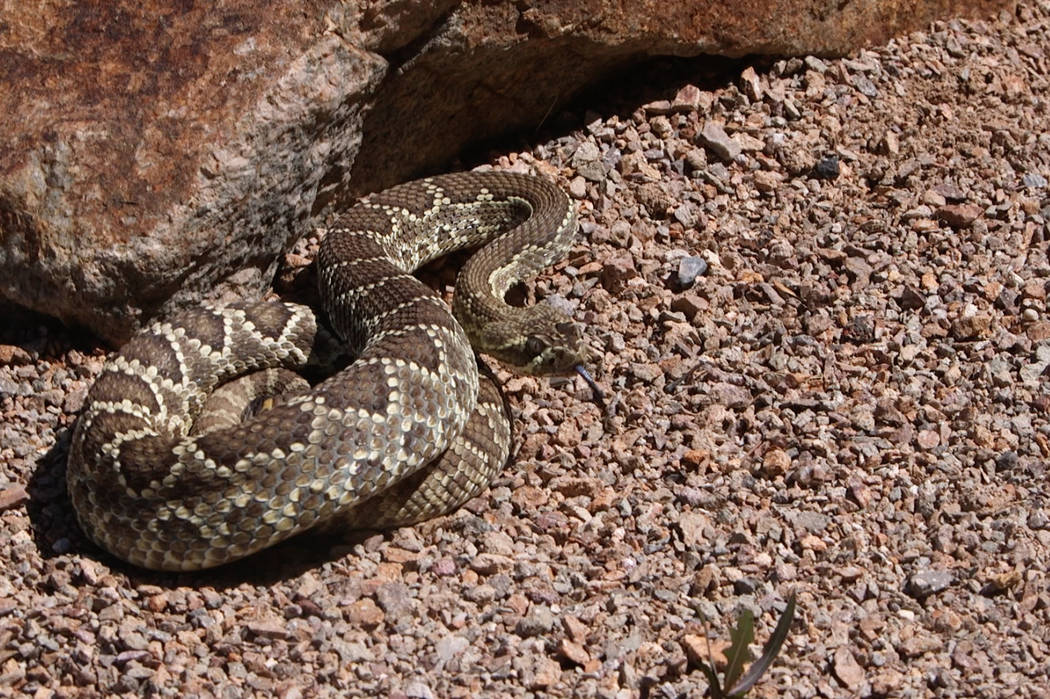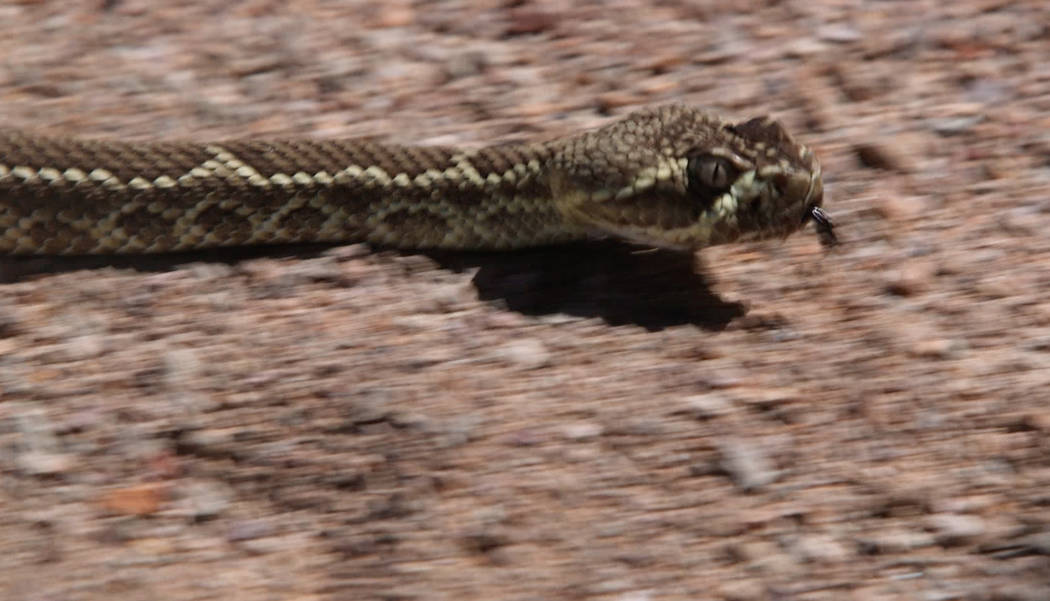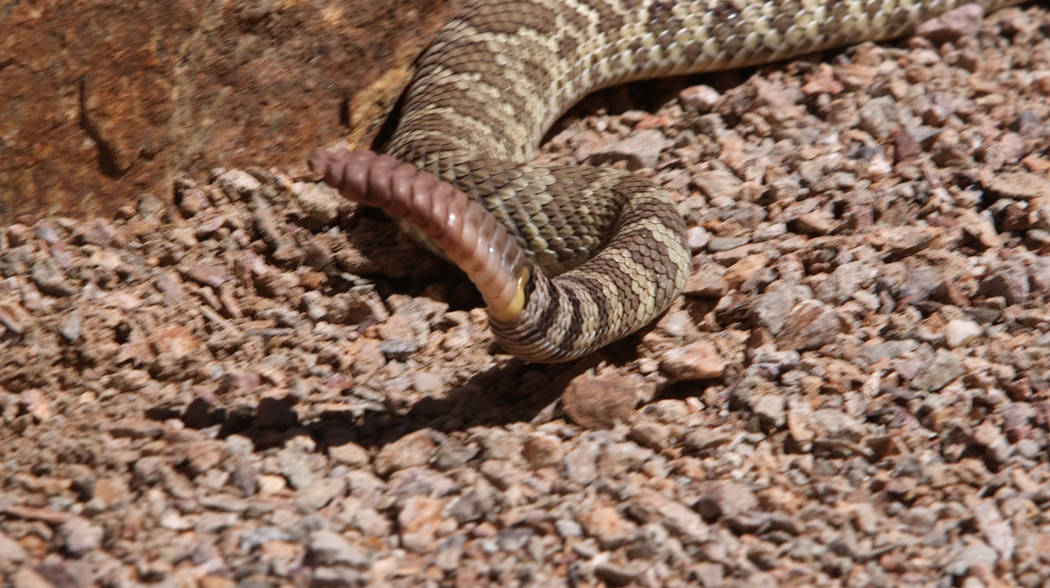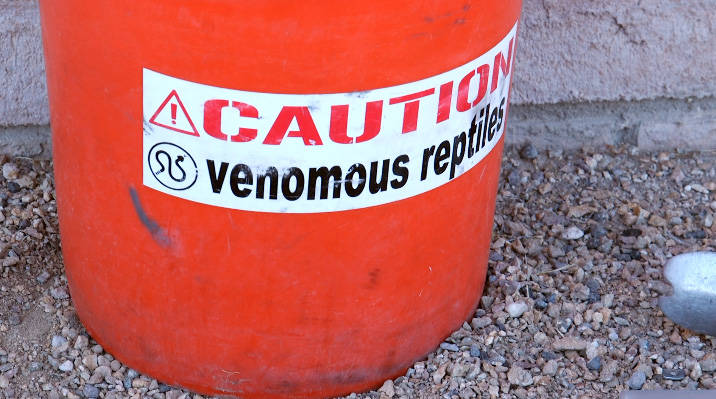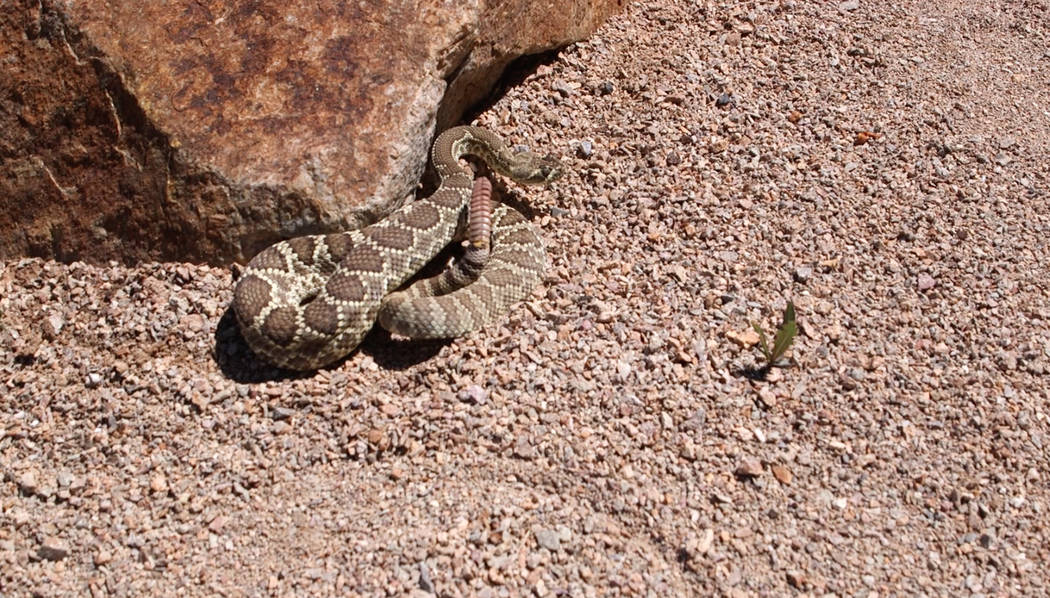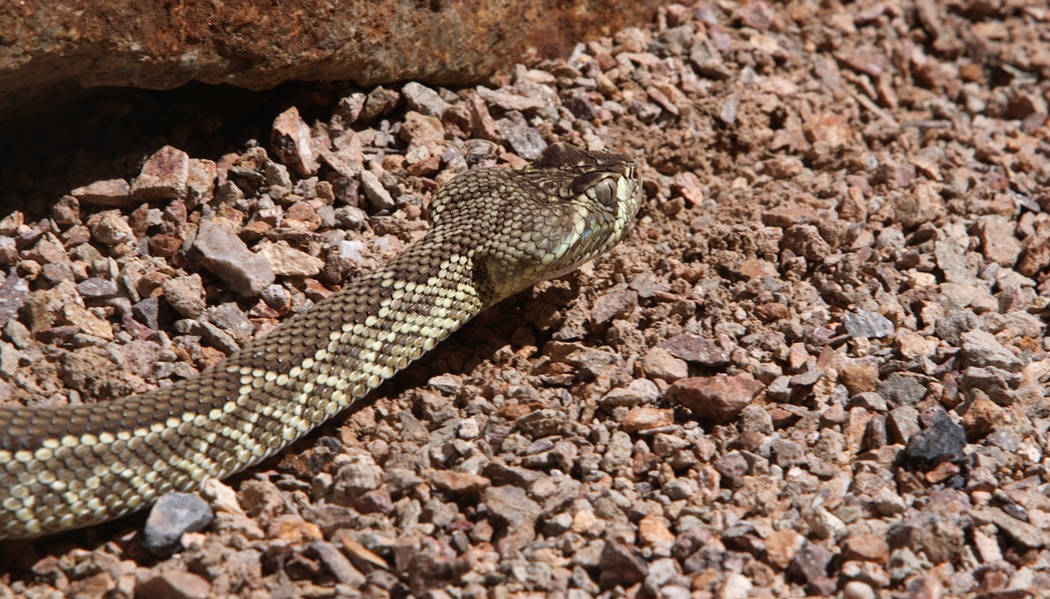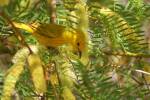Rattlesnake season slithers into Las Vegas Valley — VIDEO
As temperatures start to rise in the Las Vegas area, people are heading outside for various activities, possibly hiking and perhaps with a dog. People and pets aren’t the only creatures coming out of their winter homes — so are snakes.
Nevada, which has six species of rattlesnakes, are the only deadly venomous snakes in the state, which makes it very easy to distinguish which snakes are dangerous and which aren’t. Generally speaking, no rattle, no worry. Some snakes could have lost their rattles, and baby rattlers don’t have them either.
Snakes typically come out of their dens on south-facing slopes, but as temperatures rise, they will begin to move in order to find food and mates, which makes it harder to pinpoint where they might turn up.
If you encounter a rattlesnake
Rattlesnakes can only strike about half their body length.
“Keeping a distance of about 3 to 5 feet around that snake is generally good enough to avoid envenomation, or being bitten,” says Jason Jones, a herpetologist with the Nevada Department of Wildlife.
Rattlesnakes prefer morning or evenings, but as it gets hotter, they will be under rocks or shade.
“If you’re hot and you’re seeking shade, likely that’s what rattlesnakes are doing as well,” says Jones.
If you or your pet are bitten by a rattlesnake, remain calm. The more you move, the faster the venom will work through your system.
“You have anywhere from one to two hours, typically, they say, before things really set in,” says Jones, adding, “You don’t want to use a tourniquet, you don’t want to suck the venom out.”
He also said suction bite kits don’t work either.
“The best thing to do is get help immediately and call 9-1-1.”
Some signs of envenomation to look for if bit include swelling, bruising, dizziness and a possibly a metallic taste in the mouth.
Line of defense
Jones says rattlesnakes have a good four or five lines of defense.
1. Camouflage. Staying cryptic so no one sees them.
2. Flee. They don’t want to mess with predators. Their venom is there for prey. If they use their venom on a predator, that may potentially cost them a meal.
3. Rattle. They will rattle their tail to make sure you know they’re there.
4. Strike. If it feels cornered — depending on the specie and circumstances — the snake may give a “dry bite,” which may have less or no venom.
5. Venomation. If someone has gotten too close or is harassing the snake, it will produce a bite with venom.
In addition to calling 9-1-1, one could also call the Nevada Poison Control Center at 1-800-222-1222.
Contact Mat Luschek at mluschek@reviewjournal.com. Follow @matluschek on Twitter.



